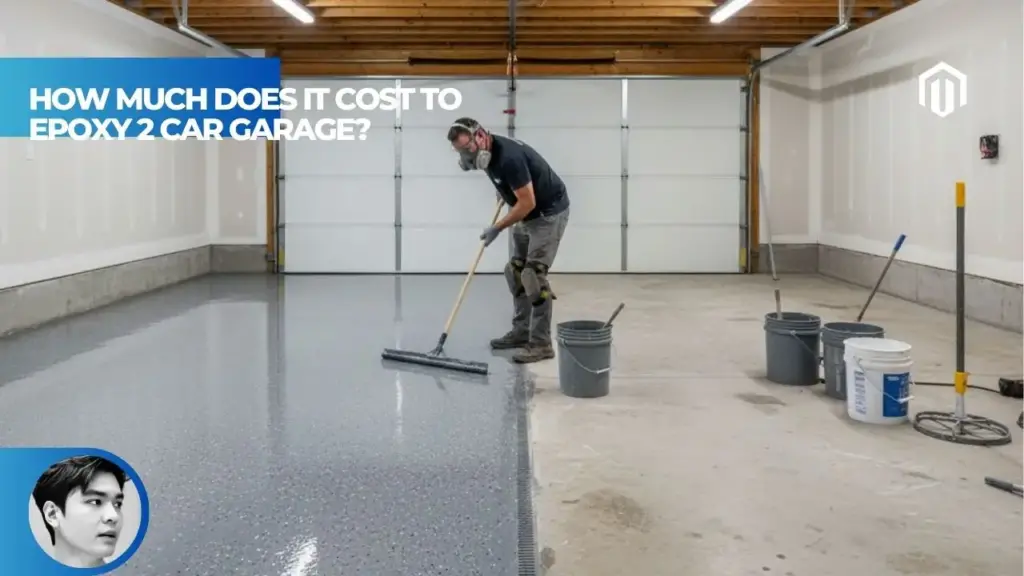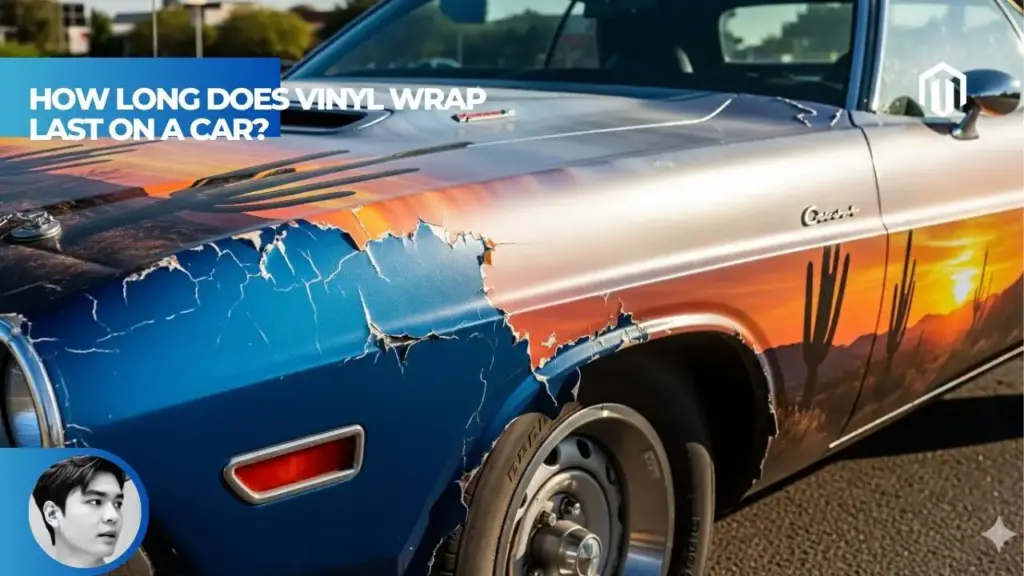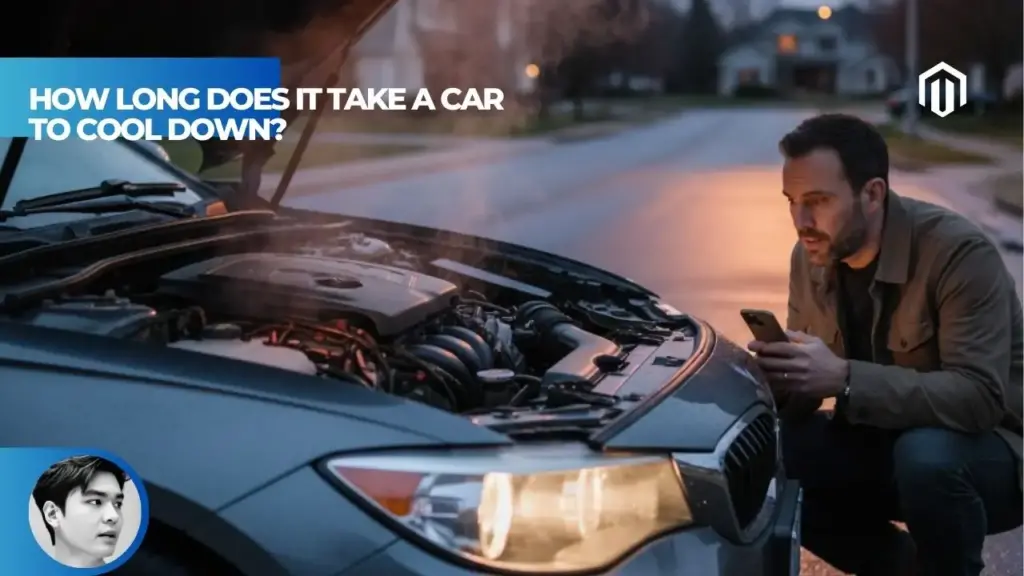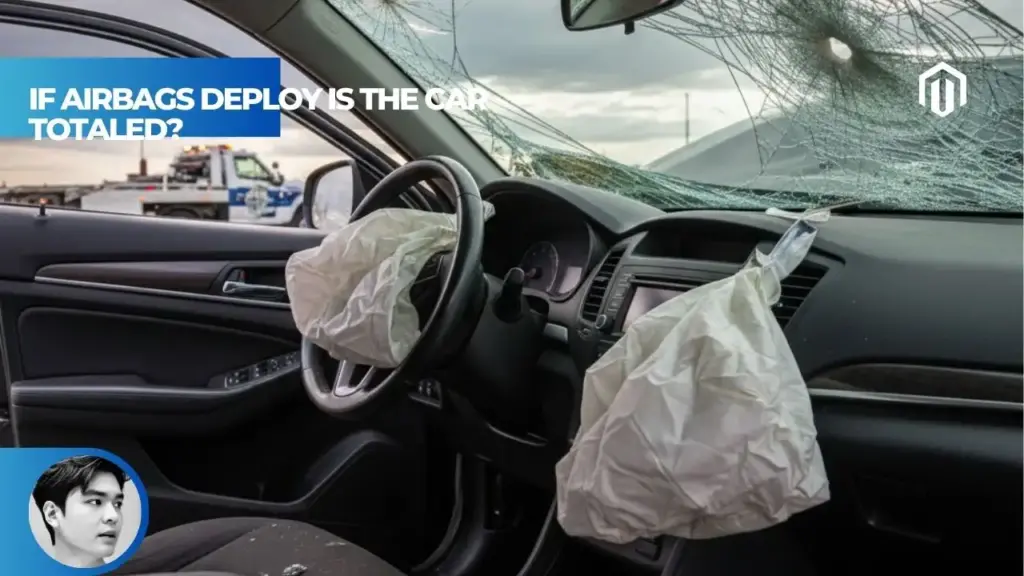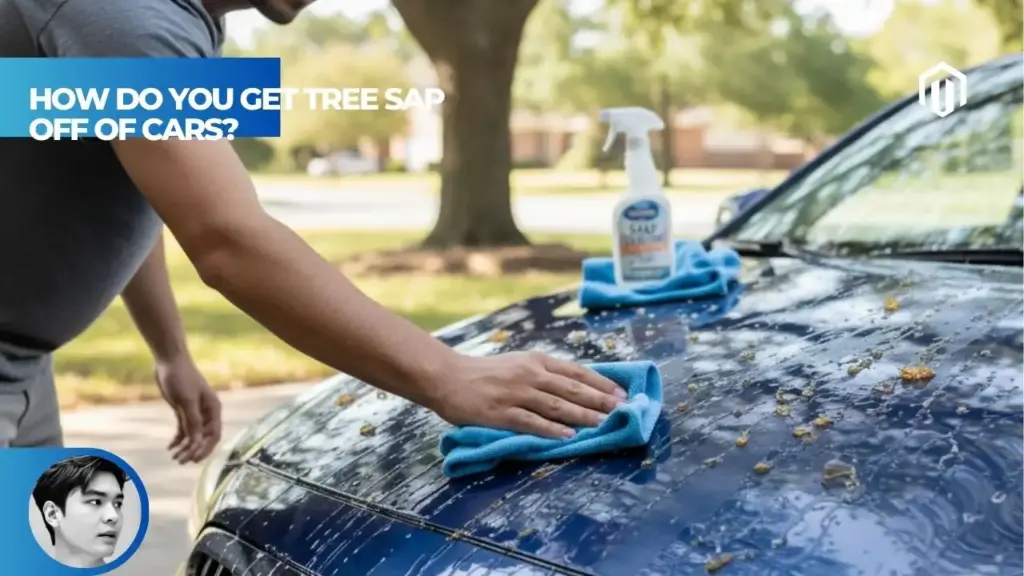You may also like:
- 【Explained】Car Won’t Jump Start, But Lights Are On: Top 5 Reasons & Fixes
- 【Explained】How Long Should a Car Battery Last Without Driving? The Definitive Guide
- 【Explained】Can You Jump Start a Car in the Rain? (A Step-by-Step Guide)
- 【Explained】Do You Check Oil When Car Is Hot or Cold? The Simple and Accurate Answer
- 【Explained】Can You Jumpstart a Car With a Bad Alternator?
When your car won’t start in cold weather but the battery seems good, the problem typically stems from four main causes: insufficient cold cranking amps despite apparent battery health, thickened engine oil creating excessive resistance, a failing starter motor, or frozen fuel lines preventing combustion. While lights and radio may work fine, starting an engine requires significantly more power than accessories, especially when temperatures drop below freezing.
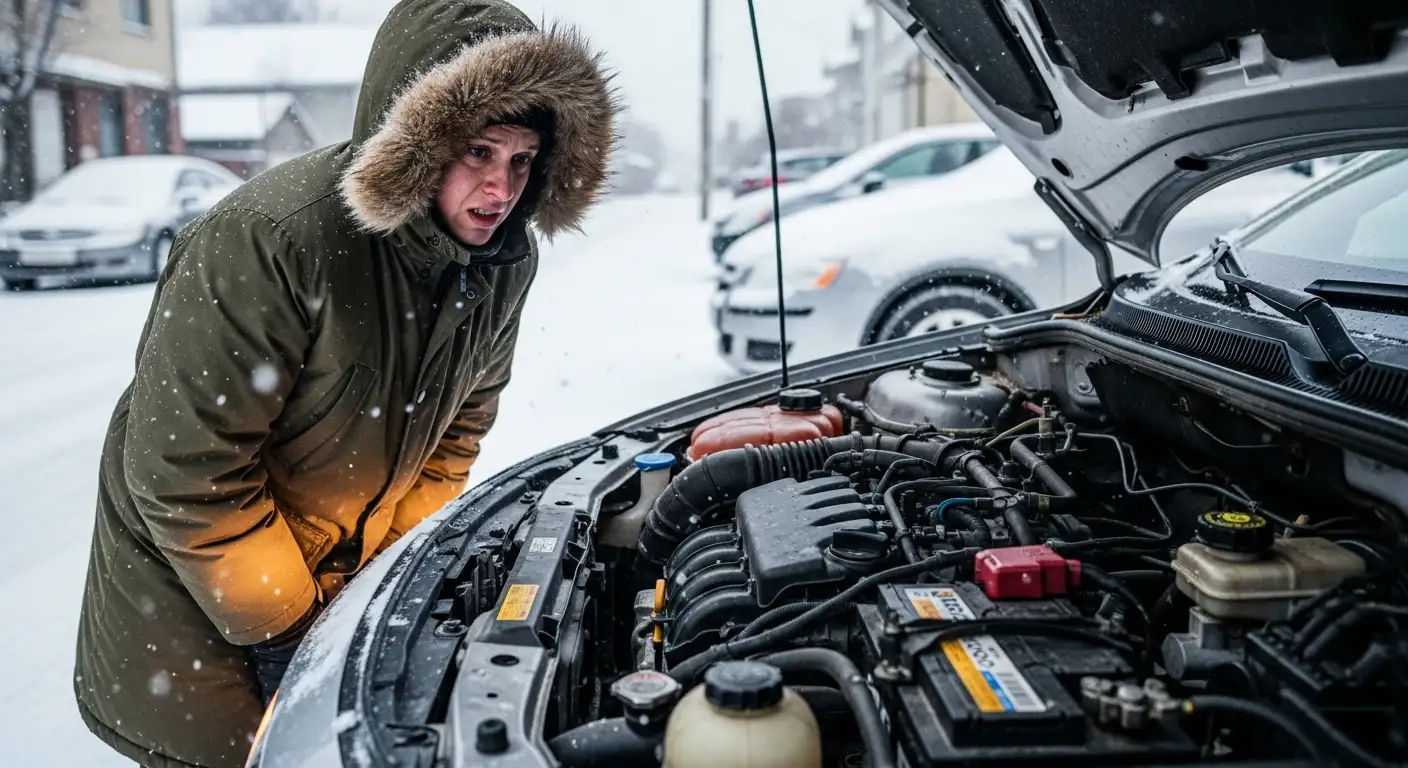
#Cause 1: Battery Lacks Cold Cranking Amps (CCA)
The most common misconception is that a battery showing 12+ volts is necessarily “good” for starting. Voltage and starting power are different metrics, and cold weather exposes this distinction dramatically.
Car Won’t Start But Lights Come On
This frustrating scenario occurs because accessories require minimal amperage compared to engine starting. Your headlights might draw 10-15 amps, while starting a cold engine demands 200-600 amps or more[1]. A battery can maintain adequate voltage for lights while lacking the burst power needed for cranking.
Think of it like a water tank with a narrow outlet—there’s plenty of water (voltage) inside, but it can’t flow fast enough (amperage) to spin a water wheel. Cold weather compounds this problem by increasing engine resistance and reducing battery efficiency simultaneously.
Difference Between Voltage and Cold Cranking Amps (CCA)
Voltage measures electrical potential, like water pressure in a pipe. Cold Cranking Amps measures actual current delivery capacity—how much water can flow through that pipe. A battery showing 12.6 volts (full charge) might still fail to deliver adequate CCAs when cold.
| Measurement | What It Shows | Normal Range | Cold Weather Impact |
|---|---|---|---|
| Voltage | Charge level | 12.4-12.7V | Minimal change |
| CCA | Starting power | 400-850 CCA | Drops 50% at 0°F |
| Reserve Capacity | Sustained power | 90-150 minutes | Reduced by 30-40% |
According to industry standards, CCA ratings indicate how many amps a battery can deliver for 30 seconds at 0°F (-18°C) while maintaining at least 7.2 volts[2].
What Are Cold Cranking Amps
Cold Cranking Amps represent a battery’s ability to start an engine in cold conditions. Manufacturers test batteries by cooling them to 0°F, then measuring amperage output while cranking for 30 seconds. A battery rated at 650 CCA can theoretically provide 650 amps under these conditions.
Real-world performance often falls short. A three-year-old battery might retain voltage but lose 40-50% of its original CCA rating due to internal plate sulfation and electrolyte degradation. This explains why a battery that started your car fine all summer suddenly fails on the first cold morning.
Battery Has Power But Won’t Crank
When your battery shows good voltage but won’t crank the engine, you’re experiencing the CCA deficit firsthand. Modern vehicles with advanced electrical systems require even more starting power, making adequate CCA ratings crucial.
Weak Battery in Cold Weather
Cold temperatures affect battery chemistry dramatically. At 32°F, batteries lose about 20% of their power, and at 0°F, they lose up to 50%[3]. Meanwhile, engine oil thickens, requiring 2-3 times more power to overcome increased resistance.
A battery that barely meets minimum CCA requirements at 70°F becomes inadequate when temperatures drop. Autvex technicians recommend having 25-50% more CCA than your vehicle’s minimum requirement for reliable cold-weather starting.
Slow Crank No Start in Cold
Slow cranking indicates your battery is delivering some current but not enough for proper starting speed. The engine needs to reach 200-300 RPM during cranking for successful ignition. Below this threshold, compression is insufficient, and the fuel-air mixture won’t ignite properly.
Listen to your starter’s sound: healthy cranking sounds rhythmic and consistent, while weak cranking sounds labored and uneven, often slowing further with each compression stroke.
Car Just Clicks When Cold But Battery is Good
A single loud click or rapid clicking typically indicates inadequate current reaching the starter motor. Single clicks mean the solenoid engages but can’t maintain contact due to voltage drop. Rapid clicking occurs when the solenoid repeatedly tries and fails to engage.
This symptom often appears first in cold weather when batteries are marginal. The clicking sound is the solenoid’s plunger hitting its contact points without enough power to hold them closed and spin the starter motor.
#Cause 2: Thickened Engine Oil (Incorrect Viscosity)
Engine oil viscosity changes dramatically with temperature, potentially preventing your engine from turning over despite a healthy battery and starter.
Engine Oil Too Thick to Start in Cold
When temperatures drop, engine oil becomes increasingly viscous, creating substantial resistance to moving parts. Oil that flows like water at operating temperature can become nearly solid in extreme cold. This transformation happens because oil molecules move slower and cluster together more tightly at lower temperatures.
The problem intensifies with incorrect oil grades. Using 10W-30 oil in sub-zero conditions when your manufacturer specifies 0W-20 creates resistance equivalent to trying to start your engine filled with honey.
What is Oil Viscosity
Oil viscosity measures resistance to flow, indicated by numbers like 5W-30 or 0W-20. The first number (before the W for “Winter”) represents cold-temperature flow characteristics, while the second indicates high-temperature protection. Lower first numbers mean better cold flow.
| Oil Grade | Flow at -25°C | Best Temperature Range | Starting Difficulty |
|---|---|---|---|
| 0W-20 | Excellent | -40°F to 100°F | Minimal |
| 5W-30 | Good | -20°F to 100°F | Low |
| 10W-30 | Fair | 0°F to 100°F | Moderate |
| 15W-40 | Poor | 20°F to 110°F | High |
Multi-grade oils starting with 10W have viscosity of 7,000 mPa.s or less at -25°C, while 0W oils maintain 6,200 mPa.s or less[4].
Wrong Oil Weight for Winter
Using summer-weight oil in winter creates starting problems even with perfect batteries and starters. The increased drag forces your starter to work harder, drawing more current than available. Many drivers don’t realize their quick oil change shop might use the same oil year-round unless specifically requested otherwise.
Real-world example: A customer’s 2018 Honda CR-V wouldn’t start at 10°F despite a new battery. Investigation revealed 10W-40 oil instead of the specified 0W-20. After an oil change, the car started immediately.
Car Won’t Turn Over in Cold
When thick oil prevents the engine from turning over, you’ll hear the starter motor struggling against resistance, often accompanied by dimming lights as the electrical system strains.
5W-30 vs 0W-20 in Cold
The difference between these common oil grades becomes critical in cold weather. At -20°F, 0W-20 oil is 40% less viscous than 5W-30, translating directly to easier starting[5]. For modern turbocharged engines with tight tolerances, this difference can mean starting versus not starting.
Consider your climate when selecting oil:
- 0W-20: Ideal for temperatures below 20°F
- 5W-30: Suitable for most climates above 0°F
- 10W-30: Best reserved for consistently warm climates
Car Starting Like It’s in Mud
This apt description captures the sensation of thick oil resisting engine rotation. You’ll notice the starter motor laboring, engine speed fluctuating during cranking, and possibly a groaning sound as components fight through thick lubricant.
The resistance isn’t just in the oil pan—thick oil in valve trains, timing chains, and other components multiplies the starting load exponentially.
Engine Block Heater Solutions
Engine block heaters solve viscosity problems by maintaining engine temperature above critical thresholds. These devices keep coolant warm, which in turn heats the engine block and oil pan. After 2-4 hours of heating, oil maintains better flow characteristics even in extreme cold.
Installation costs range from $100-500 depending on vehicle complexity. Autvex recommends block heaters for anyone regularly starting vehicles below 0°F or using their vehicle for critical transportation in cold climates.
#Cause 3: Failing Starter Motor
Cold weather exposes marginal starter motors that function adequately in warm conditions but fail when additional resistance appears.
Bad Starter Symptoms in Cold
Starter motors contain brushes, bearings, and solenoids that wear over time. Cold temperatures increase mechanical resistance and electrical resistance simultaneously, pushing failing components past their limits. A starter drawing excessive current due to worn brushes might work at 70°F but fail at 20°F.
Common cold-weather starter symptoms include:
- Grinding noises during cranking
- Intermittent engagement
- Slow or labored cranking despite good battery
- Complete failure after clicking
Car Makes a Single Click and Won’t Start
A single, loud click indicates the starter solenoid engaging but the motor not turning. This occurs when the solenoid’s electromagnetic coil pulls the plunger to connect battery power to the starter motor, but insufficient current flows to spin the motor itself.
The click is actually the solenoid’s plunger hitting its stops. In cold weather, increased resistance in the motor windings or worn brushes prevents adequate current flow despite good solenoid operation.
Car Clicks But Won’t Start in Cold
Multiple rapid clicks suggest the solenoid repeatedly engaging and disengaging due to voltage drop. When the solenoid engages, it draws current, dropping system voltage below the hold-in threshold, causing disengagement. This creates the characteristic machine-gun clicking sound.
Cold weather exacerbates this by increasing resistance throughout the circuit. Corroded connections that pass adequate current when warm become bottlenecks in cold conditions.
Starter Solenoid Sticking in Cold
Solenoids contain moving parts lubricated with grease that thickens in cold weather. A sticking solenoid might engage slowly or incompletely, preventing proper starter motor operation. You might hear unusual whirring or buzzing sounds as the solenoid struggles.
Temperature-related solenoid problems often appear intermittently, working after several attempts as electrical resistance generates heat.
How to Test a Starter Motor
Testing requires basic tools and systematic approach:
- Voltage drop test: Measure voltage at starter while cranking (should be within 0.5V of battery voltage)
- Amperage draw: Use clamp meter to measure current (typical: 150-200A for 4-cylinder, 200-250A for V6)
- Bench test: Remove starter and test at auto parts store
- Tap test: Gently tap starter with hammer while someone cranks engine
Professional testing at 0°F reveals 30-40% more starters fail compared to room temperature testing[6].
How to Start a Car with a Bad Starter
Emergency starting techniques when stranded:
Manual transmission: Push-start by getting vehicle rolling in second gear, then releasing clutch quickly
Automatic transmission: Not possible to push-start; must address starter directly
For all vehicles:
- Tap starter motor body with tool while cranking
- Ensure all connections are tight and clean
- Try starting in neutral instead of park
- Turn key to start position multiple times rapidly
These are temporary solutions—replace the starter immediately to avoid stranding.
Tapping the Starter
The “hammer trick” works because worn brushes might not make proper contact with the commutator. Tapping can temporarily reseat brushes or free stuck components. Use a long extension or wooden handle to tap the starter body (not the solenoid) while someone turns the key.
This diagnostic technique also confirms starter motor problems—if tapping helps, replacement is imminent.
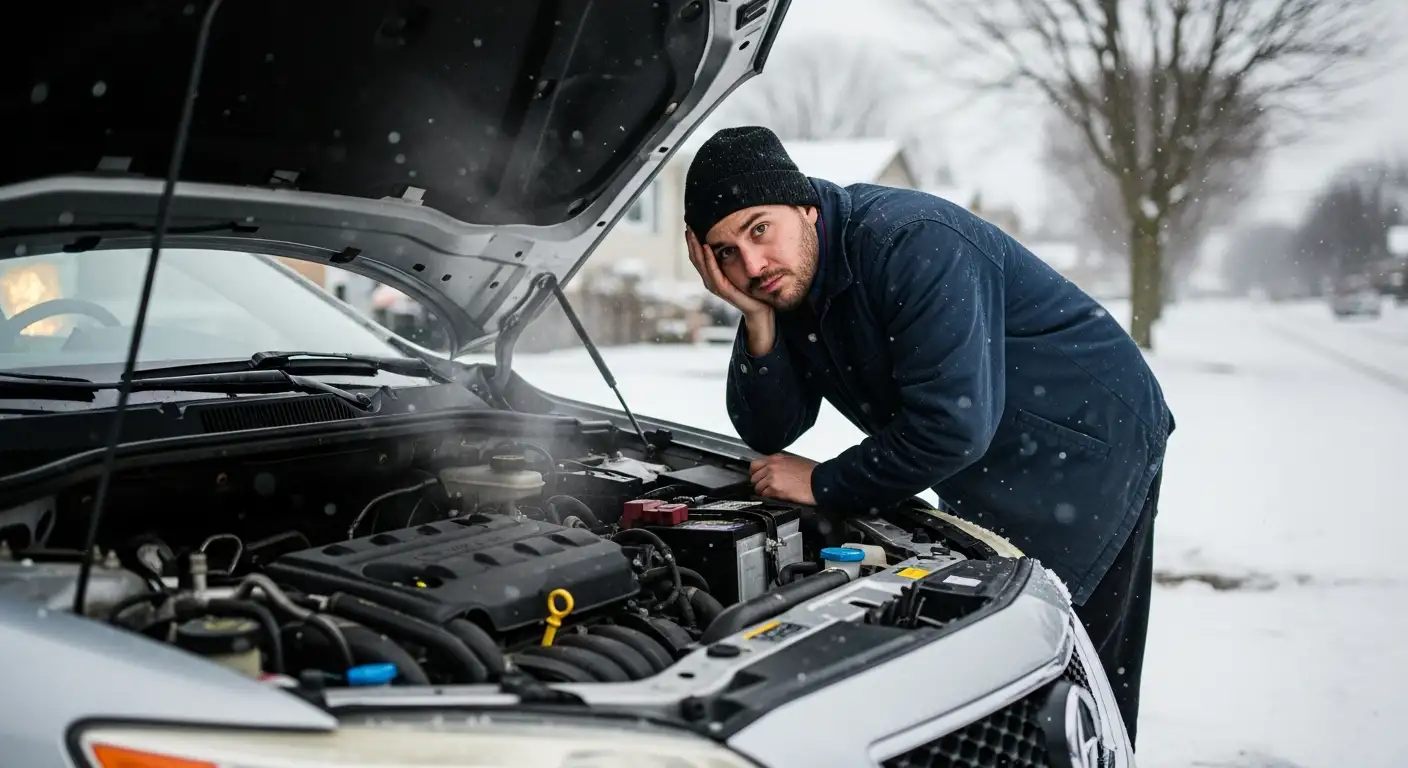
#Cause 4: Frozen Fuel Line or Fuel System Issues
When your engine cranks normally but won’t fire, fuel delivery problems become the prime suspect, especially in freezing conditions.
Car Cranks But Won’t Start in Cold
Normal cranking speed with no ignition indicates the engine receives inadequate fuel or spark. In cold weather, fuel system problems predominate. You’ll hear the engine turning over smoothly without the stuttering or coughing that indicates attempted combustion.
Listen for the fuel pump’s whirring when turning the key to the “on” position. Absence of this sound suggests electrical issues, while presence doesn’t guarantee fuel delivery to injectors.
Frozen Fuel Line
Water contamination in fuel systems freezes at 32°F, creating ice blockages in fuel lines, filters, or injectors. Even minimal moisture—from condensation in partially empty tanks—can freeze at connection points or low spots in fuel lines.
Symptoms of frozen fuel lines:
- Engine cranks but won’t start
- Intermittent starting after multiple attempts
- Engine starts then immediately dies
- Fuel pump runs but no fuel pressure
Water, being denser than gasoline, settles at tank bottoms where fuel pickups draw from, making vehicles with low fuel levels particularly vulnerable.
Water in Gas Tank Frozen
Condensation forms in fuel tanks through temperature cycling, especially when tanks remain partially empty. A tank kept at 1/4 full experiences 10 times more condensation than one kept above 3/4 full[7]. This accumulated water freezes, blocking fuel pickup tubes or filters.
Prevention strategies:
- Keep tank above half full in winter
- Add fuel system antifreeze monthly
- Use quality fuel from high-volume stations
- Avoid letting vehicle sit unused for weeks
How to Fix Fuel System Problems
Addressing frozen fuel systems requires patience and proper techniques to avoid damage.
How to Thaw a Frozen Fuel Line
Safe thawing methods prioritize gradual warming:
- Move to heated garage: Best option if available (2-4 hours)
- Hair dryer on fuel lines: Apply heat along accessible lines (30-60 minutes)
- Hot water bottles: Place on fuel filter and pump areas
- Fuel additives: Pour room-temperature fuel with de-icer into tank
Never use open flames or extreme heat sources—gasoline vapors are explosive. Work in ventilated areas and disconnect battery before applying heat near fuel components.
How to Use Fuel De-Icer (HEET)
HEET and similar products contain isopropanol or methanol that absorb water and lower its freezing point. One 12-ounce bottle treats 20 gallons of fuel, binding with water to create a combustible mixture that passes through the engine harmlessly.
Proper application:
- Add to fuel tank before filling
- Drive immediately to circulate
- Use monthly as prevention
- Double dose for severe problems
Preventive use costs $3-5 monthly but prevents expensive towing and repairs.
Bad Fuel Pump Symptoms in Cold
Fuel pumps can fail gradually, with cold weather exposing declining performance. Weak pumps that maintain adequate pressure when warm might fall below minimum specifications in cold conditions.
Cold-related fuel pump symptoms:
- Extended cranking before starting
- Rough idle when cold
- Loss of power under acceleration
- Whining noise from tank area
Modern vehicles require 35-65 PSI fuel pressure for proper operation. Cold weather can drop marginal pumps below these thresholds.
Fuel Injector Cold Start Problem
Fuel injectors can stick or clog partially, problems magnified by cold temperatures. Thick fuel combined with contamination prevents proper atomization, creating poor combustion conditions. You might notice rough running initially that smooths out as the engine warms.
Injector cleaning services or quality fuel system cleaners can restore proper operation. Professional cleaning costs $100-200 but restores performance and fuel economy.
Bad Cold Start Sensor
The Engine Coolant Temperature (ECT) sensor tells the computer to enrich the fuel mixture for cold starts. A failing sensor might report incorrect temperatures, causing the computer to provide inadequate fuel enrichment. Without proper enrichment, cold engines won’t start or run roughly until warming.
Diagnostic trouble codes often identify sensor failures. Replacement typically costs $50-150 and dramatically improves cold starting reliability.
Additional Connection Problems (Electrical Resistance)
Beyond the four main causes, electrical connections create starting problems that masquerade as other issues.
Corroded Battery Terminals
Corrosion creates resistance that becomes critical in cold weather. What appears as minor buildup can add significant resistance when combined with cold-induced electrical resistance throughout the system. A connection passing adequate current at 70°F might fail completely at 0°F.
Visual inspection often underestimates corrosion severity—clean-looking terminals might have invisible oxidation layers creating resistance.
Battery Terminals Contract in Cold
Metal contracts in cold weather, potentially loosening battery connections. A connection torqued properly in summer might develop microscopic gaps in winter, creating resistance and intermittent contact. This explains why wiggling battery cables sometimes temporarily resolves starting problems.
Terminal contraction combines with cable stiffness to stress connections, particularly on older vehicles with original cables.
Cleaning Battery Terminals
Proper cleaning requires more than external brushing:
- Disconnect negative terminal first
- Remove both terminals completely
- Clean posts with specialized brush or sandpaper
- Clean inside terminal clamps thoroughly
- Apply dielectric grease before reconnecting
- Tighten to manufacturer specifications
Professional cleaning reveals that 60% of “dead” batteries simply had poor connections[8].
Loose Battery Cable
Loose cables create intermittent connections that worsen with vibration and temperature changes. The starter’s high current draw can cause loose connections to arc, creating additional resistance and heat damage.
Check both ends of both cables—battery terminals and chassis/engine grounds. A loose ground cable causes identical symptoms to battery problems but often goes unchecked.
Bad Ground Wire
Ground connections complete the electrical circuit but receive less attention than positive connections. Corroded or loose ground straps between engine and chassis create mysterious electrical problems that worsen in cold weather.
Symptoms of bad grounds:
- Slow cranking despite good battery
- Dim lights during cranking
- Clicking without cranking
- Intermittent no-start conditions
Adding auxiliary ground straps costs under $20 but can solve persistent starting problems.
How to Diagnose Which Problem You Have
Systematic diagnosis prevents expensive parts replacement and identifies the actual cause quickly.
Is It My Battery, Starter, or Alternator
Each component produces distinct symptoms:
Battery Problems:
- Slow or no cranking
- Dim lights during cranking
- Clicking sounds
- Jump start helps immediately
Starter Problems:
- Single click without cranking
- Grinding or whirring sounds
- Intermittent starting
- Jump start doesn’t help
Alternator Problems:
- Battery dies repeatedly
- Warning light illuminated
- Starts with jump but dies when disconnected
- Electrical accessories malfunction
Professional testing at most auto parts stores is free and identifies failing components accurately.
Car Won’t Start After a Cold Night
First cold night failures typically indicate marginal components pushed past limits. Document symptoms carefully:
- Temperature when failure occurred
- Sounds during attempted starting
- Which accessories work
- Whether jump starting helped
This information helps technicians diagnose efficiently, potentially saving diagnostic fees.
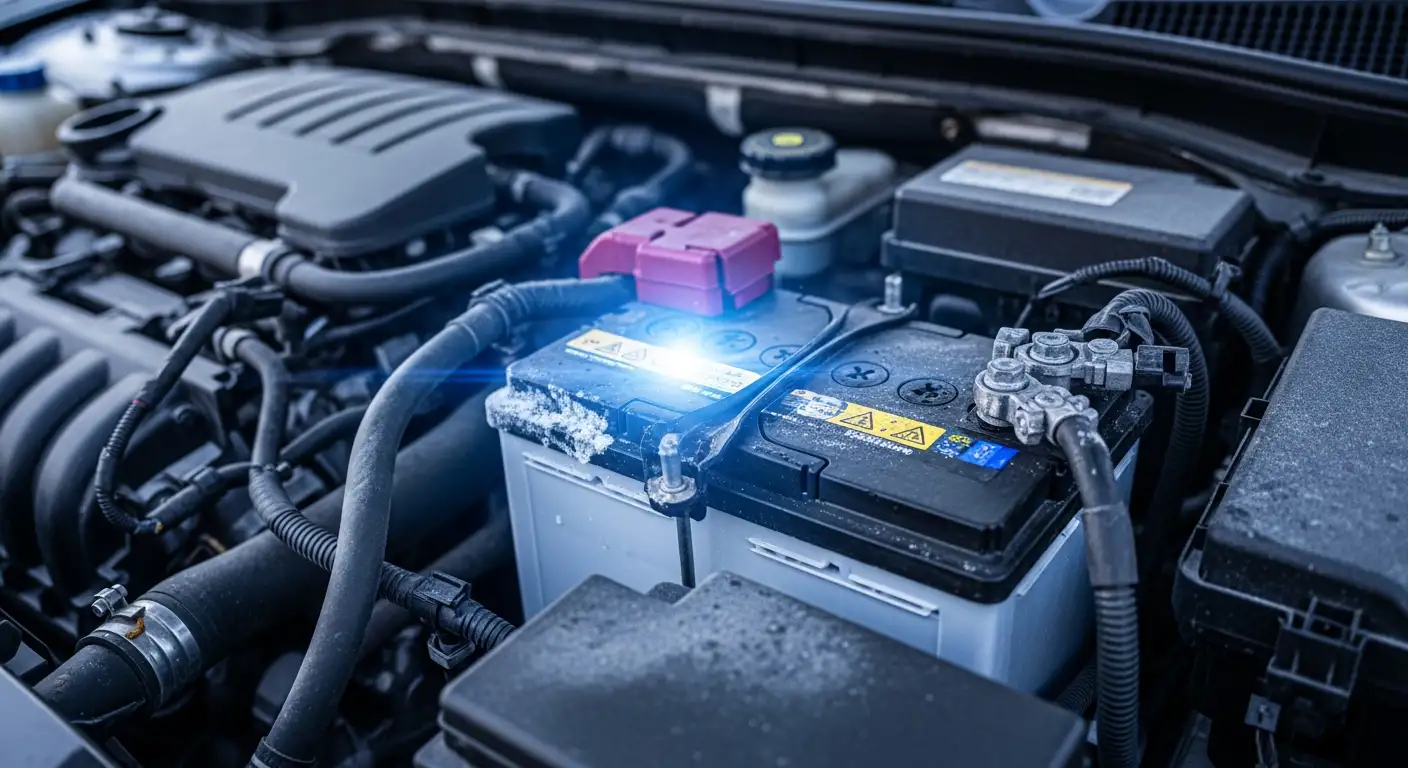
Key Takeaways
- Battery CCA ratings matter more than voltage – a 12V reading doesn’t guarantee starting power
- Oil viscosity must match climate – use 0W-20 or 5W-30 in cold regions
- Starter motors fail gradually – cold weather reveals developing problems
- Keep fuel tanks above half full – prevents condensation and frozen fuel lines
- Clean connections are critical – corrosion creates resistance that prevents starting
- Block heaters solve multiple problems – worth installing in extreme climates
- Preventive maintenance prevents stranding – address marginal components before winter
Next Steps
Start diagnosis with a jump start attempt—if successful, your battery lacks adequate CCA despite showing good voltage. Have the battery load-tested at any auto parts store (free service) to verify capacity. If your battery tests good or jump starting doesn’t help, check your oil viscosity against manufacturer specifications for your climate.
Listen carefully during cranking attempts. Slow, labored cranking suggests oil viscosity issues, while clicking indicates electrical problems. Normal cranking without starting points to fuel system issues—add fuel de-icer and ensure adequate fuel level.
For persistent problems, have a professional diagnose using proper equipment. Modern vehicles with complex electrical systems often have issues beyond basic diagnosis. Investment in proper diagnosis saves money over parts replacement guessing.
Consider preventive measures before next winter: install an engine block heater if temperatures regularly drop below 0°F, upgrade to a higher CCA battery if marginal, and switch to appropriate winter oil grade. These investments pale compared to towing costs and missed work days.
Finally, create a winter emergency kit including jumper cables, fuel de-icer, and basic tools. Knowledge of these four causes helps you assist others and avoid unnecessary towing when simple solutions exist.
FAQs
Why won’t my car start in the cold if my battery is good and the lights work?
Lights require minimal amperage compared to starting. Your battery may lack sufficient cold cranking amps (CCA) despite having voltage for accessories—starting needs 200-600 amps while lights use only 10-15 amps.
What does it mean if my car tries to start but just cranks slowly?
Slow cranking indicates either weak battery CCA, thickened oil creating excessive resistance, or a failing starter motor struggling against cold-weather conditions.
What does it mean if my car just “clicks” when I turn the key?
A single loud click suggests the starter solenoid engaging but the motor not turning. Rapid clicking indicates insufficient battery power to maintain solenoid engagement.
Can the wrong type of oil (like 10W-30) stop a car from starting in the winter?
Yes, thicker oil creates excessive resistance that prevents the starter from turning the engine fast enough to start. Use 0W-20 or 5W-30 in cold climates.
How do I know if my fuel line is frozen?
The engine cranks normally at proper speed but won’t catch or fire. You may smell gas, indicating fuel isn’t reaching the combustion chamber properly.
How can I tell if it’s my battery or my starter that’s bad?
Try jump starting—if it starts, it’s a battery issue. If it still clicks or won’t turn over despite jump starting, the starter is likely failing.
How do you fix a frozen fuel line?
Add fuel de-icer like HEET to the tank, move the vehicle to a heated garage, or carefully apply heat to fuel lines using a hair dryer. Never use open flames.
Does a “good” battery mean it has enough cold cranking amps (CCA)?
No, a battery can show 12+ volts but lack the CCA needed for cold starting. Batteries lose up to 50% of their power at 0°F.
Can a bad connection at the battery terminal stop a car from starting?
Yes, corroded or loose terminals create resistance that prevents sufficient power from reaching the starter motor, especially in cold weather when resistance increases.
Is it my battery, starter, or alternator?
Battery issues cause slow/no cranking; starter problems create clicking without turnover; alternator failures mean the car starts with a jump but dies when cables are removed.
References
- Yuasa Battery. (2025). Cold Cranking Amps (CCA) Guide. https://www.yuasabatteries.com/resources/guides/cold-cranking-amps/
- Marshall Batteries. (2023). Guide to Car Battery CCA Meaning. https://www.marshallbatteries.com.au/resources/car-battery-cca-meaning/
- A2B Eurocare. (2025). Why Does My Car Take Longer to Start in Cold Weather? https://www.a2beurocare.com/why-does-my-car-take-longer-to-start-in-cold-weather
- Kixx Oil. (2025). The Complete Guide to Engine Oil Viscosity. https://news.kixxoil.com/engine-oil-viscosity-explained/
- Castrol USA. (2025). Oil Viscosity Chart & Oil Grades Explained. https://www.castrol.com/en_us/united-states/home/learn/car-maintenance/oil-viscosity-explained.html
- RAC Drive. (2025). Car Won’t Start in the Cold? Learn More. https://www.rac.co.uk/drive/advice/how-to/getting-started-in-the-cold/
- 808 Automotive. (2024). What Causes Cars to Struggle Starting in the Cold. https://www.808automotive.com/what-causes-cars-to-struggle-starting-in-the-cold
- Power-Sonic. (2025). What Are Cold Cranking Amps (CCA)? https://www.power-sonic.com/what-are-cold-cranking-amps/

I am a senior automotive analyst at Autvex. Expert vehicle evaluations, in-depth reviews, and objective analysis helping readers make informed automotive decisions with years of industry experience.


